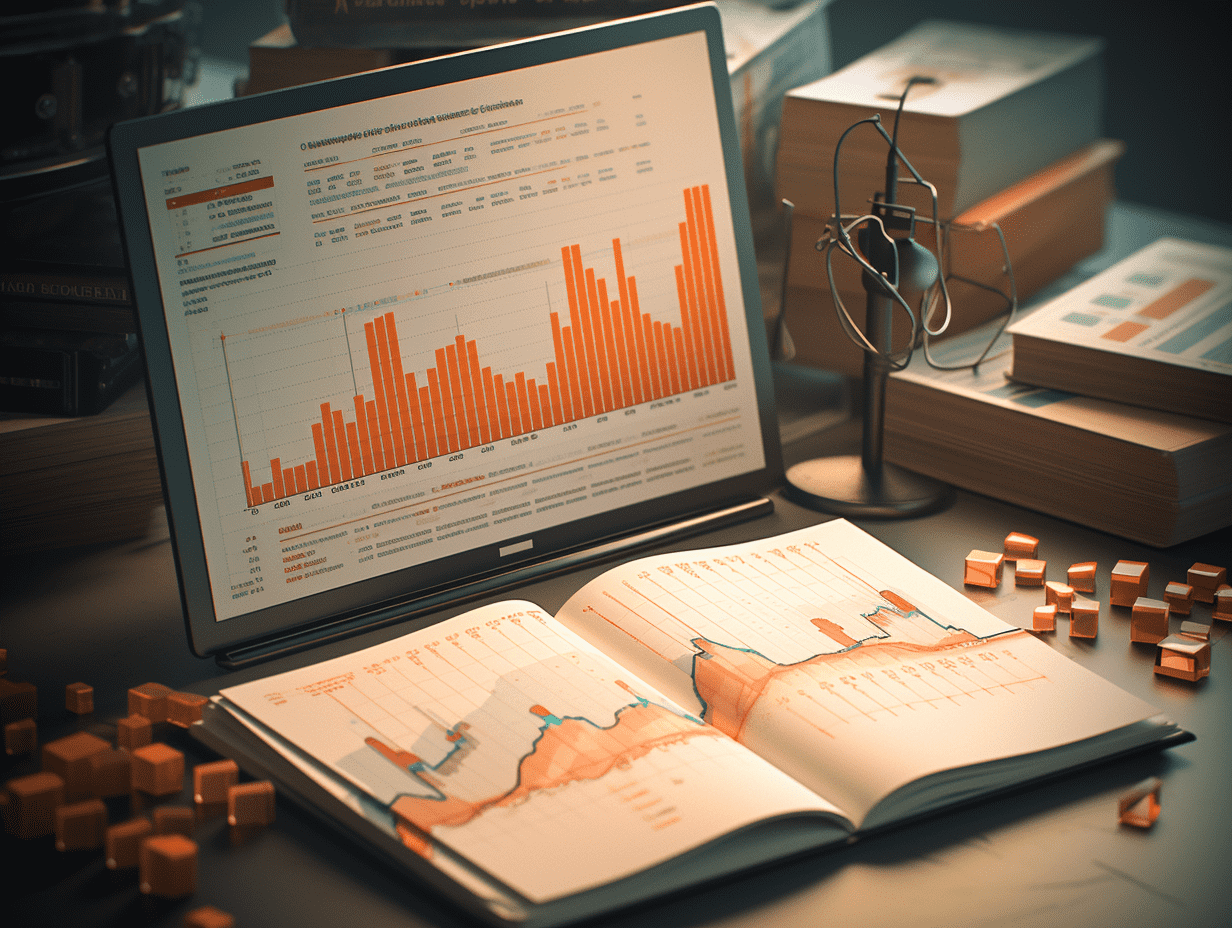Margin trading account opening continues to reach new highs! 205,400 new accounts were opened in September, with the proportion of active investors still at a low level.
In September, the number of new margin trading accounts for A-shares reached 205,400, hitting a new high for the year, an increase of 288% compared to the same period last year. By the end of September, the total number of accounts reached 15.29 million, with the number of new accounts opened this year gradually increasing. However, the level of margin trading investor activity remains low, with the proportion of investors participating in margin trading and those with debt investments much lower than ten years ago.
Latest data shows that in September 2025, the number of new margin accounts for A-shares reached 205,400, a month-on-month increase of 12.24% and a year-on-year increase of 288%, reaching a new high for the year. The total number of margin accounts at the end of the period exceeded 15.29 million.
Looking at the trend within the year, the number of margin accounts has been gradually increasing. In January, there were only 74,100 accounts, which increased to 183,000 in August, and further surpassed 200,000 in September, showing a continuous increase in investor participation. By the end of September, there were 7.6976 million individual margin investors in A-shares and 50,100 institutional investors, with the number of participating traders and investors with liabilities significantly increasing compared to the beginning of the year.
However, the overall activity of margin investors is still at a low level. On October 16th, active investors accounted for 5.64%, which is much lower than the peak of 14.09% ten years ago. Investors with liabilities accounted for 23.53%, also lower than the peak of 36.57% ten years ago, with a difference of more than 13 percentage points.
The leverage level remains stable, with the margin balance on October 16th accounting for 2.54% of the market capitalization, and the margin buying amount accounting for 11.07% of the A-share turnover, both lower than historical averages.
In addition, the balance of margin business in the third quarter increased by 29.34%, from 1.84 trillion yuan to 2.38 trillion yuan, leading to several securities firms increasing their business scale in response to demand. At the same time, ChinaLin and Sinolink adjusted their margin requirements to reflect both the hot market demand and risk control measures.
The number of new margin accounts in September reached a new high for the year, increasing by 288% year-on-year.
The latest data shows that in September, there were 205,400 new margin accounts in the market, reaching the highest for the year, with a 12.24% increase from August (183,000 accounts) and a 288% increase from September last year (52,900 accounts). By the end of September, the total number of margin accounts in the market had reached 15.29 million.
Looking at the opening data from January to September this year, the number of new margin accounts has been gradually increasing, from 74,100 in January, 97,400 in February, 144,500 in March, 106,000 in April, 88,700 in May, 101,400 in June, 123,600 in July, 183,000 in August, and surpassing 200,000 in September, reaching 205,400. The number of accounts at the end of the period has also continued to increase from 14.41 million in January to 15.29 million in September, with monthly new accounts hitting a new high several times, demonstrating the increasing enthusiasm of investors for margin trading business.
According to iFind data, as of September 30th, there were 7.6976 million individual margin investors in A-shares and 50.100 institutional investors. In terms of trading activity, the number of investors participating in margin trading reached 477,800, and the number of investors with margin trading liabilities reached 1.7628 million, both showing significant growth compared to the beginning of the year.
The proportion of active margin investors is still at a low level
However, compared to ten years ago, the proportion of active margin investors is still at a low level, and has not yet reached the peak level of the "9.24" market in 2024.
As of October 16th, the proportion of investors participating in margin trading in the total number of margin investors was 5.64%, while on September 30th, this proportion was 6.17%. At the highest point ten years ago, this proportion reached 14.09%. The current proportion of active margin investors is far lower than that of ten years ago, accounting for only about 40% of the historical peak, and showing a trend of slight decline in the short term.
Looking at the data of investors with liabilities as a proportion of the total margin investors, as of October 16th, this proportion was 23.53%, while on September 30th, it was 22.75%. At the highest point ten years ago, this proportion reached 36.57%. The current proportion of margin investors with liabilities is also far lower than that of ten years ago, with a difference of more than 13 percentage points.
Not only is the activity of margin investors at a healthy level, the leverage level in margins is also below the central level. As of October 16th, the margin balance in A-shares accounted for 2.54% of the market capitalization, with the highest historical data reaching 4.72% and the lowest being 1.74%; the margin buying amount accounted for 11.07% of the A-share turnover, but looking back in time, this proportion has reached a maximum of 19.26%, the current value is still lower than this, and it is at the historical central level, showing overall stable leverage level.
In the third quarter, the scale of margin business increased by nearly 30%, prompting several securities firms to adjust their limits in response to demand
In tandem with the A-share market, the margin trading business is heating up rapidly. From one securities firm adjusting the margin requirements causing market attention, to several securities firms increasing the maximum margin trading limits, to the continuous high levels of new account openings and trading activity by investors, the recent wave of margin trading for stocks conversion rates dropping to 0 is impacting market sentiment, indicating that the margin trading business is serving as a "thermometer" for the A-share market.
Looking at the overall market data, the margin balance in A-shares at the end of the second quarter was 1.84 trillion yuan, which soared to 2.38 trillion yuan by the end of the third quarter, with a quarterly growth rate of 29.34%, far exceeding market expectations.
Financial Link reporters found that margin trading business of different-sized securities firms showed significant growth, with growth rates generally concentrated in the 20%-35% range, and some leading securities firms showing outstanding performance, with medium-sized regional securities firms making even stronger efforts, and some small and medium-sized securities firms maintaining a steady growth of around 20%.
Facing strong financing demand in the market, four securities firms took action to increase their maximum limits within the year.
Zheshang: On September 24th, it announced an increase in the business scale of financing, raising the financing business scale from 40 billion yuan to 50 billion yuan.
ChinaLin: On March 29th, it raised the total limit for credit business from the original level to 6.2 billion yuan; on September 9th, the company announced an increase in the total limit for credit business to 8 billion yuan.
Industrial: On May 1st, through an adjustment of the total limit for credit business.
Shanxi: On April 26th, Shanxi increased the maximum scale of credit business using its own funds from 10 billion yuan to 11 billion yuan, with the maximum limit for margin trading business raised from 8 billion yuan to 10 billion yuan, and the maximum limit for stock pledge repos reduced from 2 billion yuan to 1 billion yuan.
Two securities firms facing tight quotas raised the margin requirements to limit flows
ChinaLin recently announced that, in order to adapt to business development and properly control business risks, it plans to optimize and adjust the margin requirements for securities traded on the Shanghai and Shenzhen Stock Exchanges. Specifically, the margin requirements for securities traded on the Shanghai and Shenzhen Stock Exchanges will be adjusted to 100%, with this adjustment officially effective starting from October 13, 2025.
It is worth noting that just a month ago, ChinaLin had announced an increase in the total limit for credit business to 8 billion yuan, and even earlier on March 29th, ChinaLin had announced an adjustment of the total limit for credit business to 6.2 billion yuan. Within a short half-year period, the company has raised the total limit for credit business twice. ChinaLin has experienced a transition from "expansion" to "restriction" in its credit business, which indirectly confirms the current market's high demand for financing.
In fact, ChinaLin is not the only securities firm to recently raise margin requirements. Over a month ago, Sinolink announced that as of August 27th, it would adjust the margin requirements for securities other than those on the Northbound Exchange, with the new margin requirements for newly opened securities other than those on the Northbound Exchange set at 100%.
Industry analysts point out that small and medium-sized securities firms have relatively smaller capital sizes and limited financing channels. In the context of strong demand in the margin trading market, they may face liquidity pressures. Raising margin requirements can help alleviate this pressure and ensure the stable operation of the business.
This article is a repost from Financial Link; GMTEight editor: Chen Xiaoyi.
Related Articles

US Stock Market Move | ACCL.US, a company controlled by Zhuo Yuan, has landed on the US stock market with a 1.75% increase in trading at the opening.

US Stock Market Move | NVIDIA Corporation holds Concept Stock Coreweave (CRWV.US), which fell more than 7%.

US Stock Market Move | Reach a $1.085 billion cooperation agreement with domestic and foreign pharmaceutical companies, Rani Therapeutics (RANI.US) soars over 265%.
US Stock Market Move | ACCL.US, a company controlled by Zhuo Yuan, has landed on the US stock market with a 1.75% increase in trading at the opening.

US Stock Market Move | NVIDIA Corporation holds Concept Stock Coreweave (CRWV.US), which fell more than 7%.

US Stock Market Move | Reach a $1.085 billion cooperation agreement with domestic and foreign pharmaceutical companies, Rani Therapeutics (RANI.US) soars over 265%.

RECOMMEND





